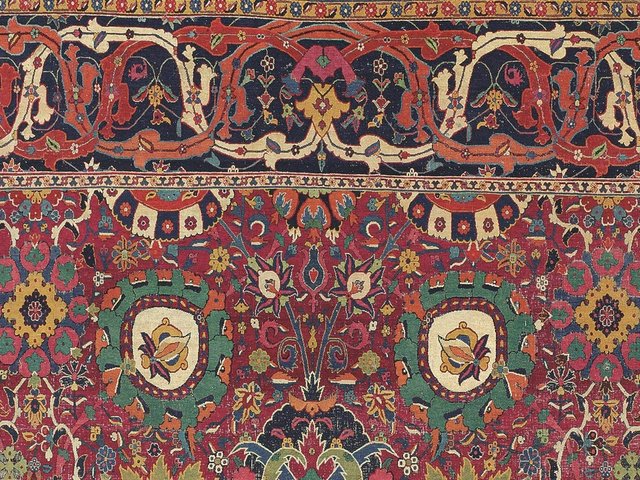The so-called “Alhambra” vases are among the glories of Islamic art produced in Spain under the Nasrid dynasty from the early 14th century onwards. Only around 10 complete examples survive today, along with some fragments, plus records of around three more, now lost. Their beauty and technical brilliance (all are at least 4ft tall) makes them unique within Spanish ceramics of amphora shape with no foot. They would seem to have been made in Malaga, some for export, but their function is still disputed: either purely decorative or as receptacles for water, wine or oil.
All the known examples are now in museums (Stockholm, Granada (two), Washington, Madrid (three), St Petersburg, Palermo, Berlin).
The appearance of another vase of this celebrated type on the art market in Paris this summer was therefore of great interest. The lot was offered with the provenance of an old Marseilles collection and that of the former “Collection Stora et Heilbronner”, presumably referring to the well-known dealers of that name (of whom Heilbronner, interestingly, owned another Alhambra vase which was lost in a fire in the 1930s). According to the auction description, a thermoluminescence certificate would be made available to the buyer.
Offered by the commissaire-priseurs Rieunier-Bailly-Pommery with the expertise of Mme Kevorkian, the vase sold at Drouot-Richelieu on 17 June against an undisclosed estimate for a staggering €3.656 million (£2.3 million; $3.5 million). Drouot announced this as a new world record for any piece of porcelain at auction, whether European or Islamic. However, scholars and experts at the time were puzzled about the piece and discussion is still ongoing.
At first sight the Drouot example certainly does not have the appearance of the other, accepted pieces, firstly because its decoration is in relief and secondly because the reddish brown and blue-grey colours are inconsistent with the other vases. Its form is also confusing as it exhibits the long slender neck characteristic of vases generally dated to the middle years of production but its lobed handles are only seen on one other (now lost) example which is generally placed at the end of the series.
A large number of the vases have inscriptions in either Kufic or naskh. According to Manuel Casamar, expert advisor to the Spanish Ministry of Culture and one of those most doubtful of the authenticity of the present piece, the inscription on the Drouot vase is not in any recognisable script. Rather, it is a copy of a famous inscription taken from a room in the Alhambra and reproduced in the sale catalogue of the artist-collector Mariano Fortuny, one of the leading figures in the 19th-century revival of interest in Spanish lustre-ware and onetime owner of the “Alhambra” vase now in the Hermitage.
Worryingly, while the Drouot vase bears little or no resemblance to the accepted group, it does seem to fall within a type of which other examples have appeared at auction–mainly in France–but which are all now rejected. According to Manuel Casamar, these include a vase sold by Ader, Picard, Tajan in 1976 which was decorated with arabesque panels in relief in blue, and another sold by Maître Rheims in 1965, also in relief in blue and green on a grey-white ground. He also points to a rather curious hip-bath once in the collection of Count Welczek in Vienna described as “Seville ceramic, imitation of Arabic Style” of which a photograph survives showing decoration extremely close to the example sold at Drouot this summer.
Of course, the fact that this latest example does not conform to others in the series cannot rule it out, as many more must have been produced at the time and any chronology and stylistic analysis based on 10 known examples can never be certain. However, the enormous revival of interest in Hispano-Moresque ceramics in the late 19th century, both in Spain and elsewhere, certainly resulted in numerous imitations and forgeries.
The piece is now being studied by museum experts in Paris and the buyer, rumoured to be a Middle Eastern ruler, has not yet made any decisions. Mme Kevorkian is quite certain about the piece. “It was authenticated by a leading specialist, and it has a thermoluminescence certificate dating it to the late 14th/early 15th century. It will soon be exhibited in an exhibition in a public museum. Those who doubt it simply haven’t seen it,” she says.
Originally appeared in The Art Newspaper as: Big price, big fake?




